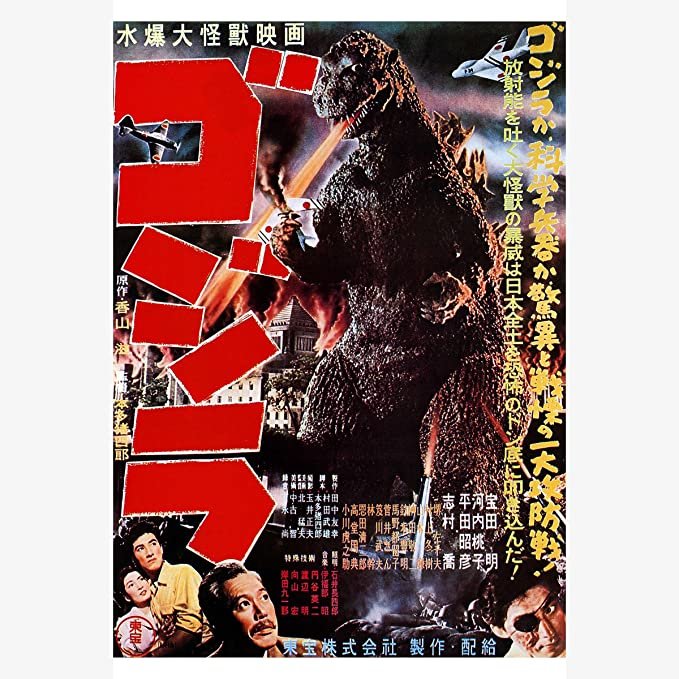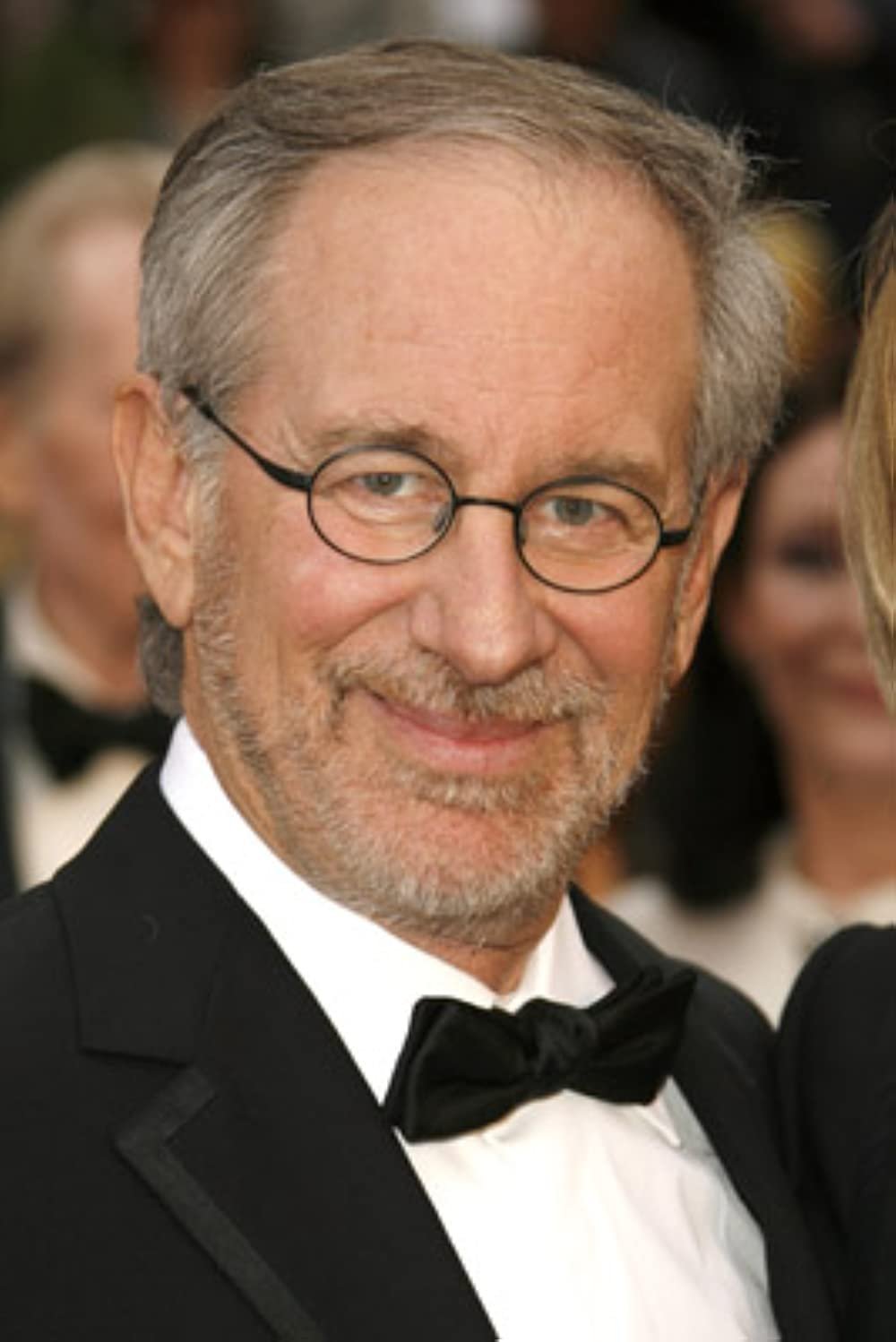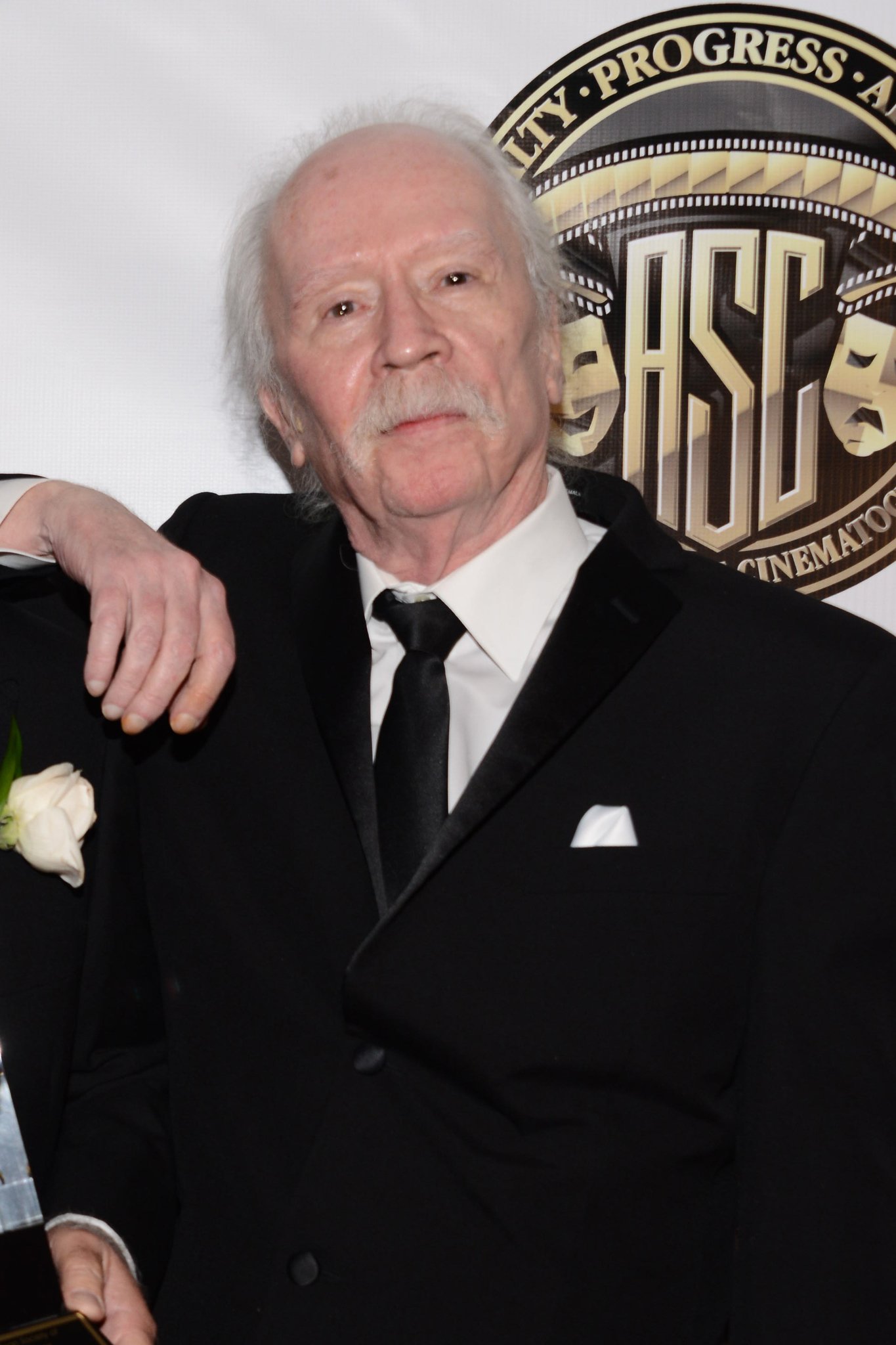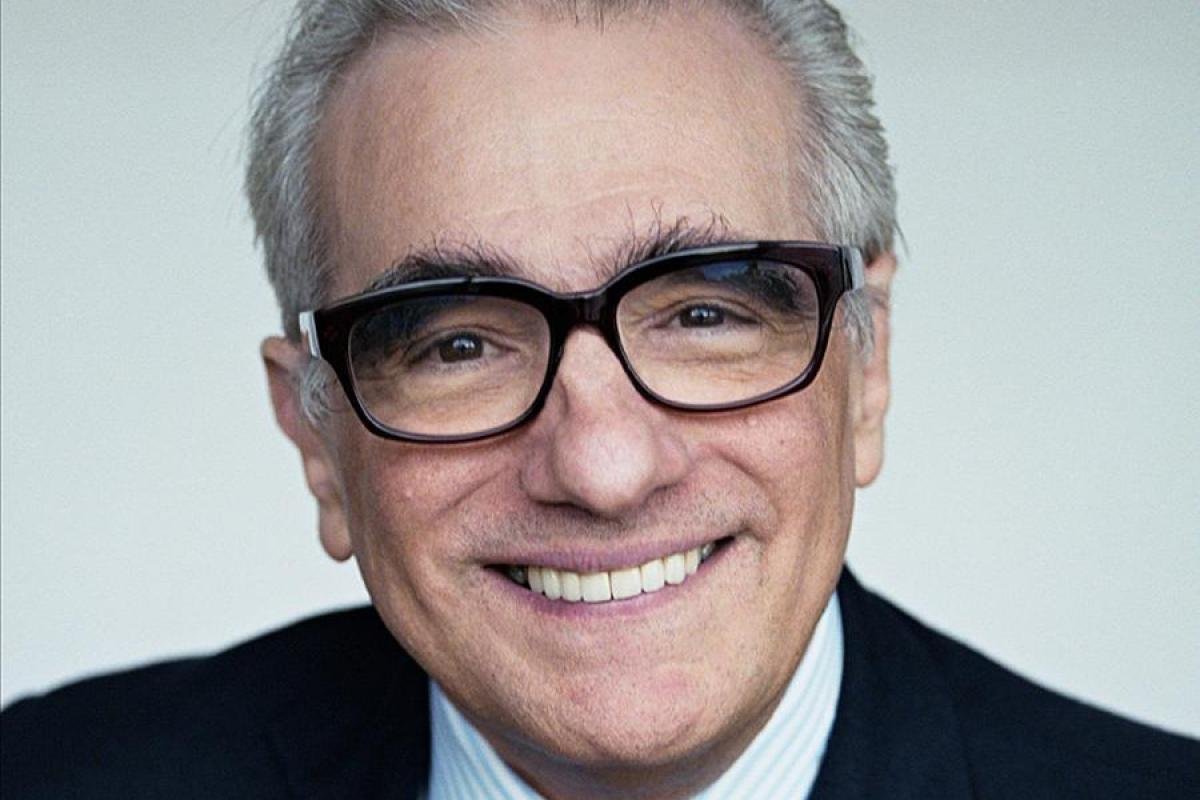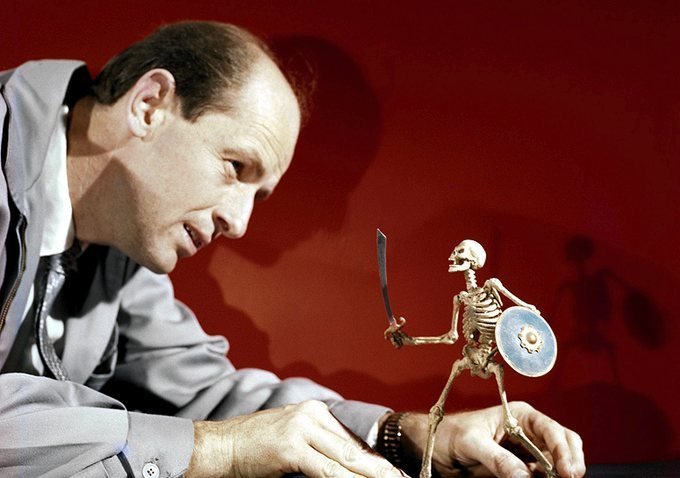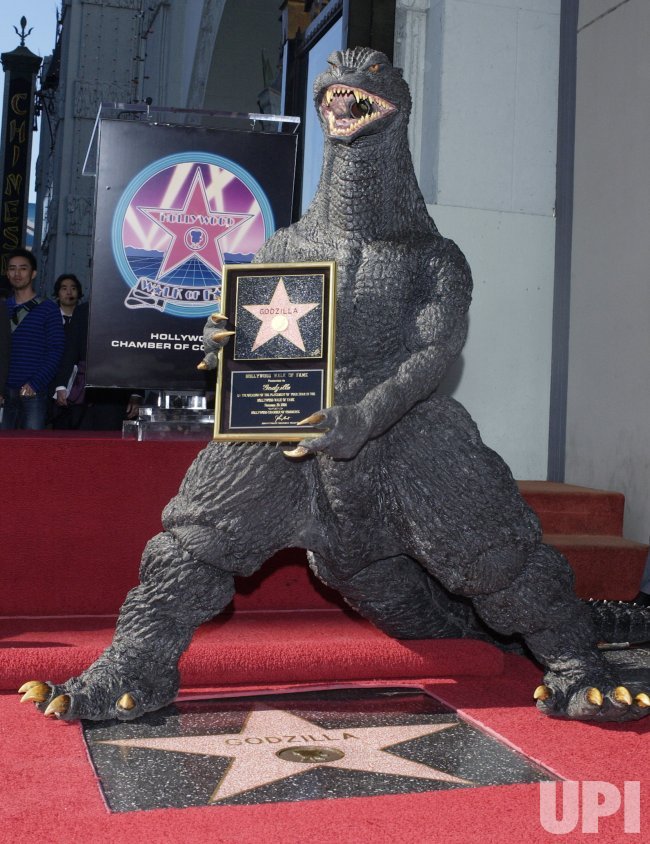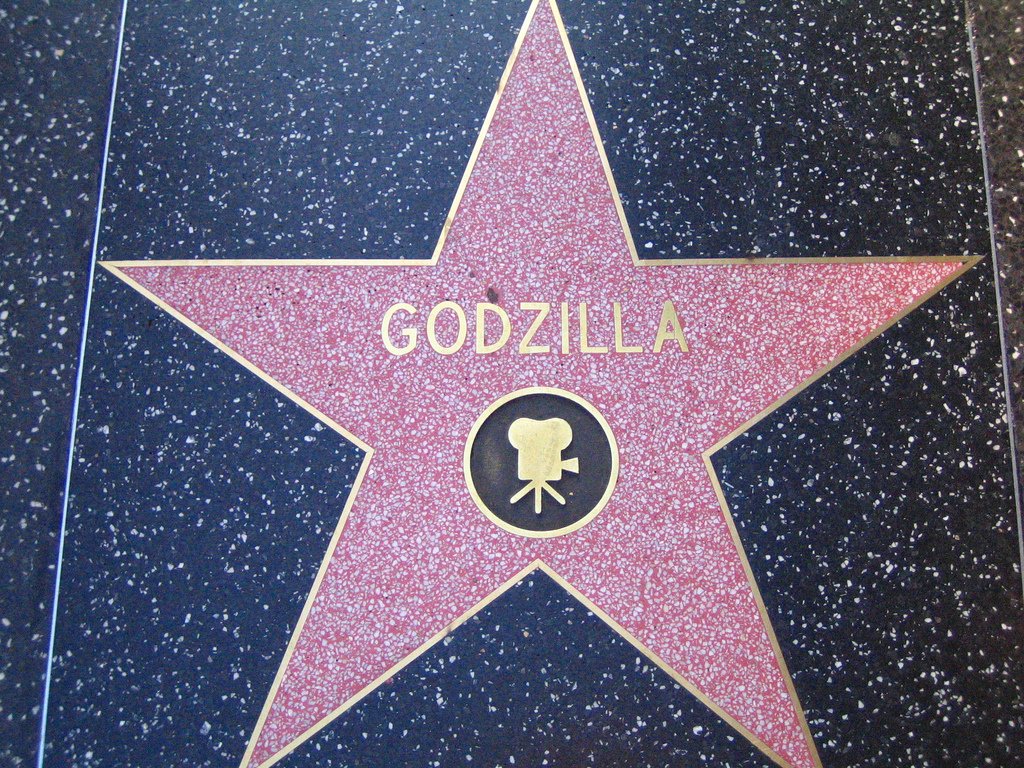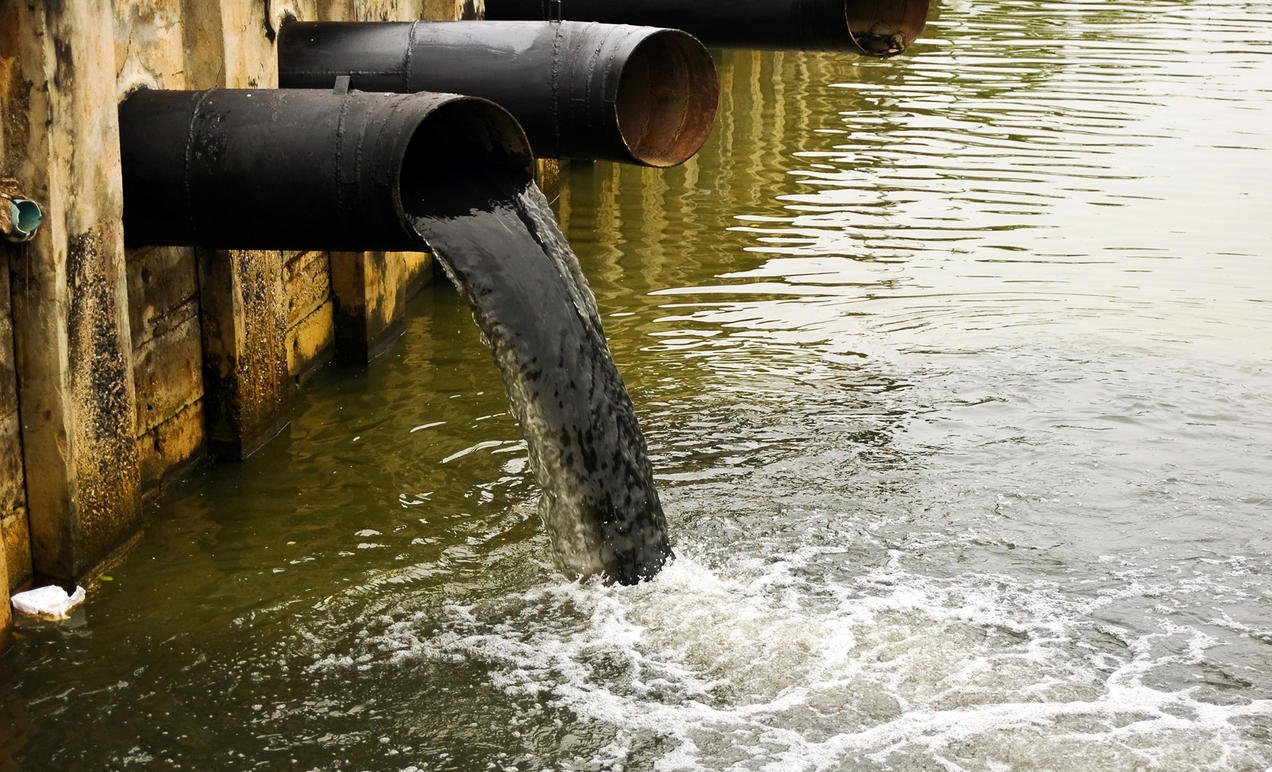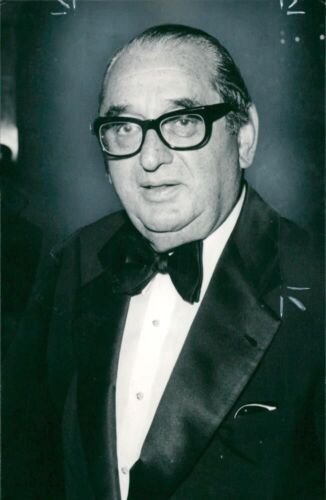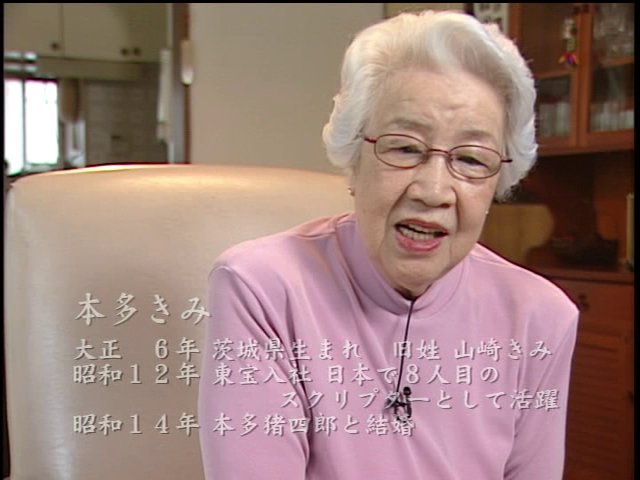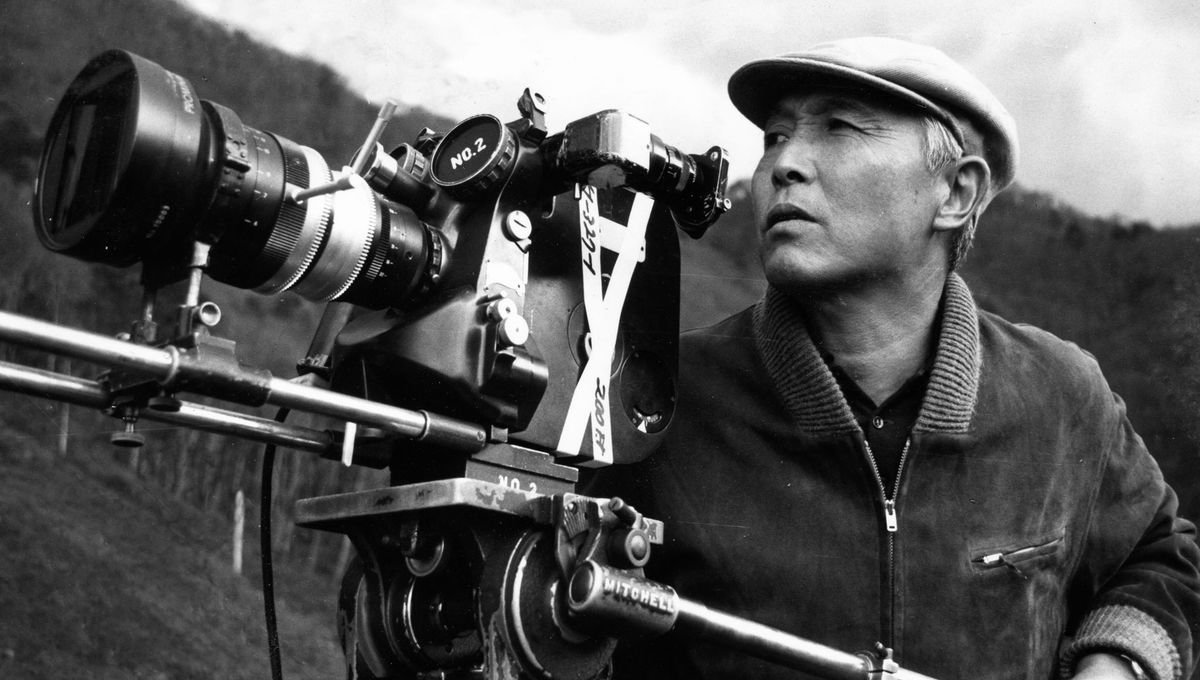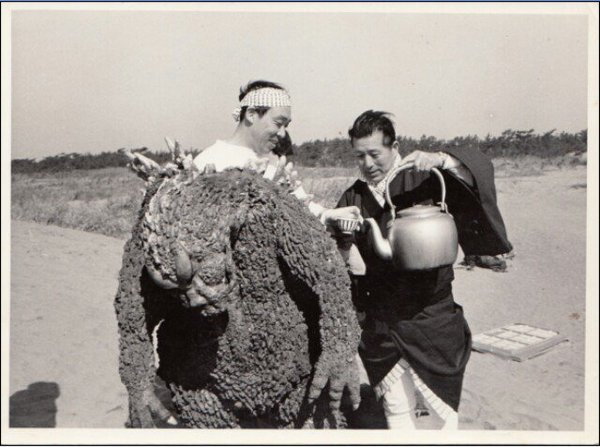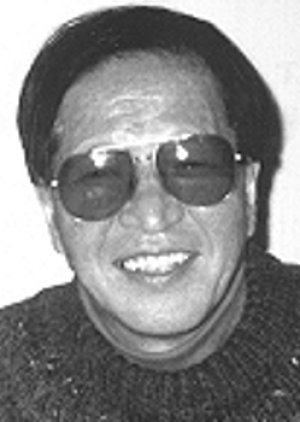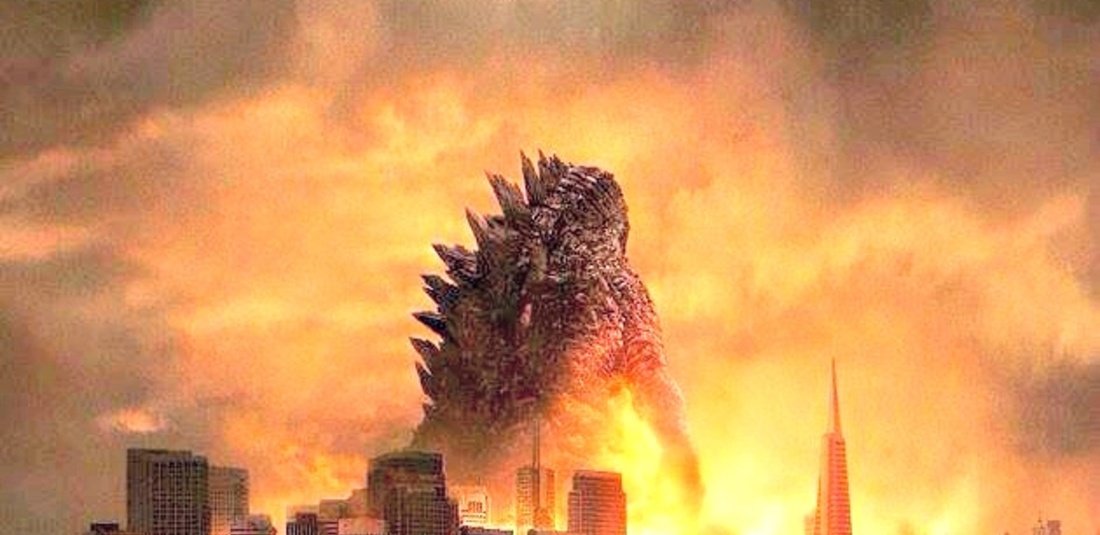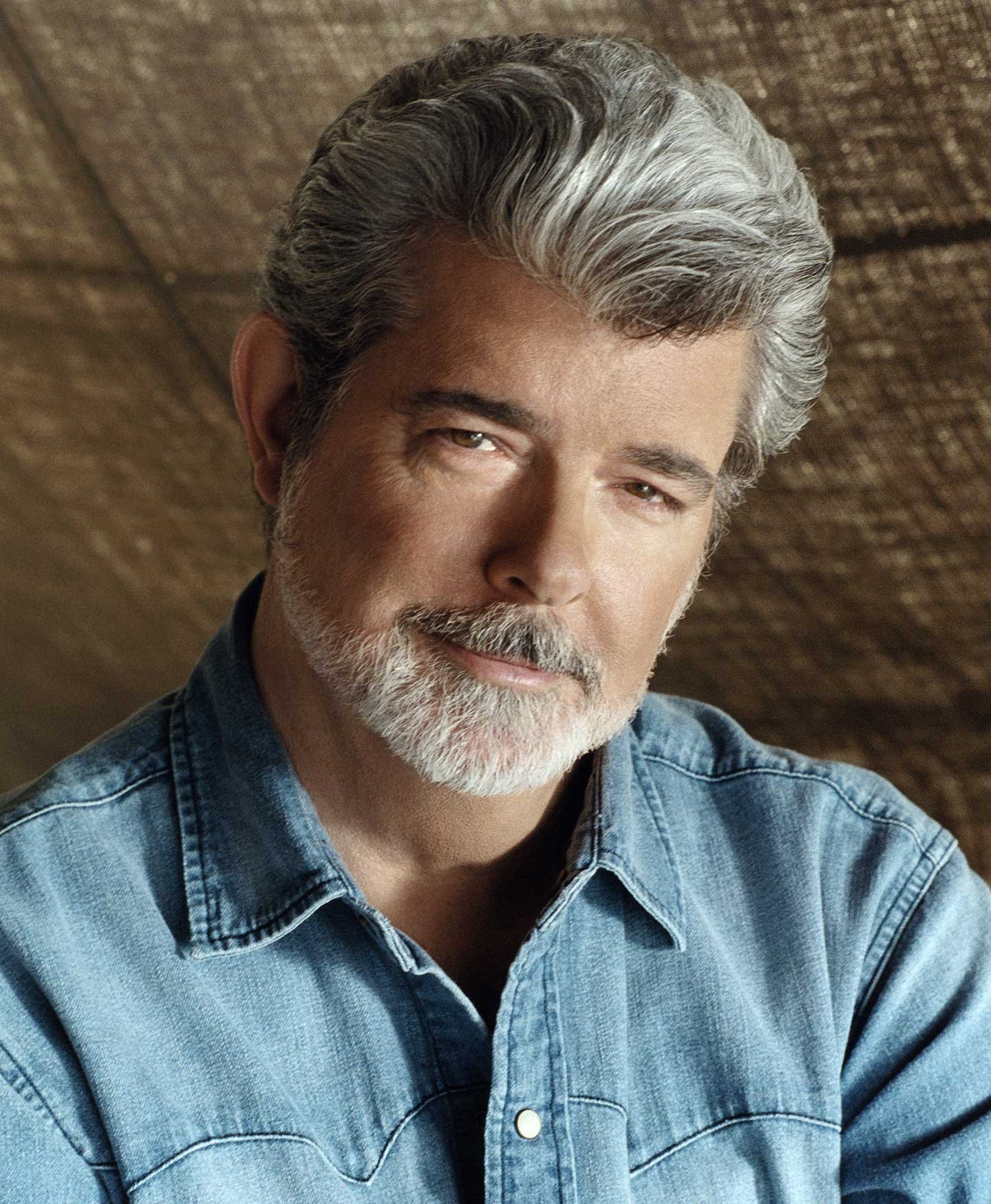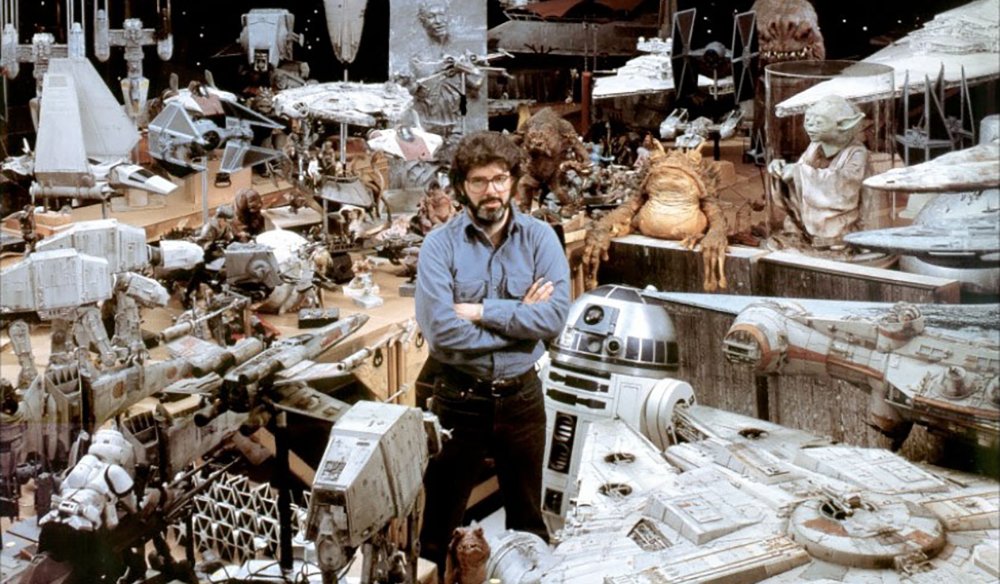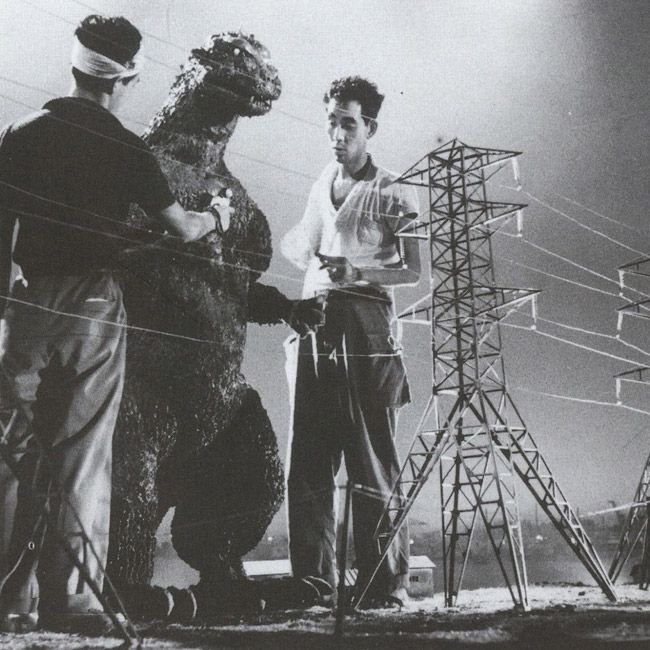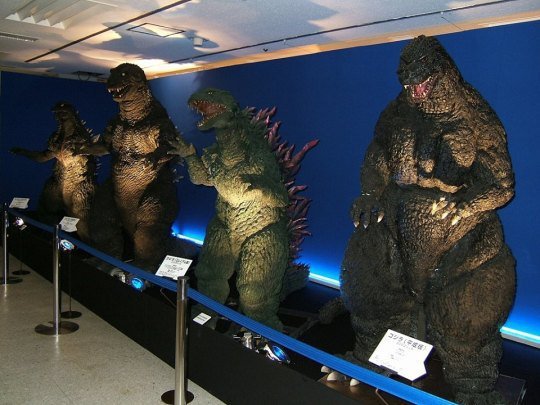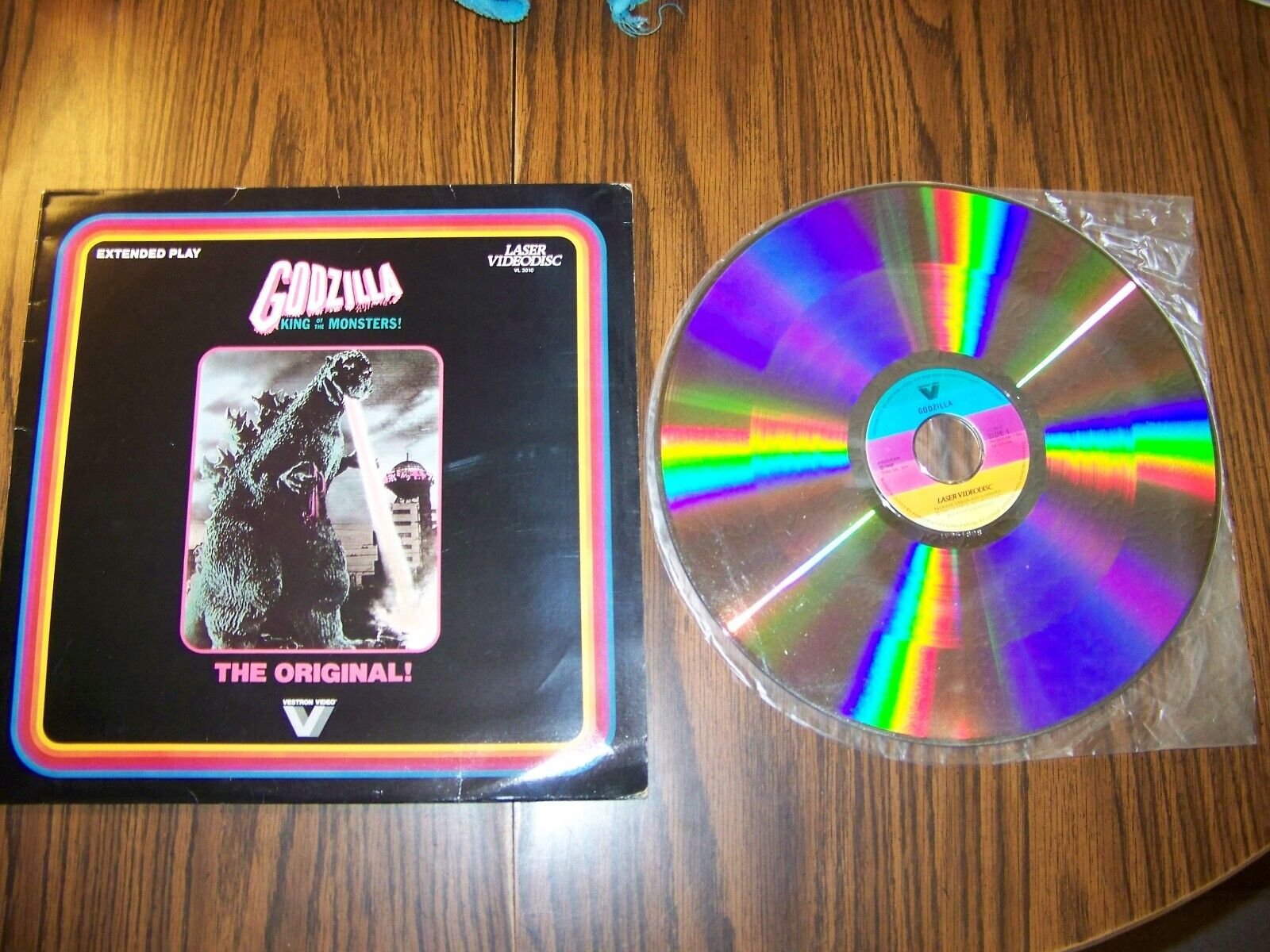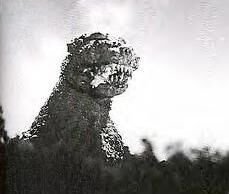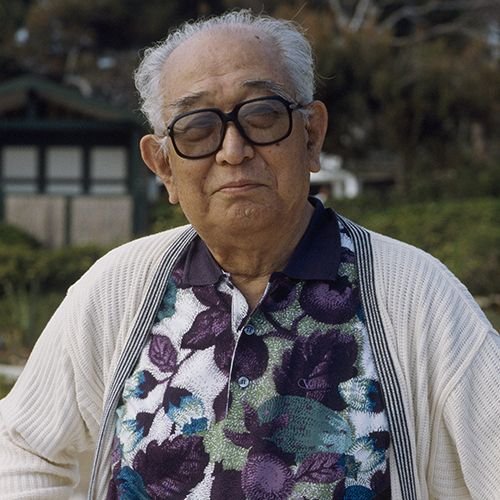[Here is “GODZILLA” and two crew members getting ready to film some destruction.]
Did you know that “THE GODZILLA SUIT” came with it’s own set of problems?
Since no film like this had ever been made in Japan, they had never attempted a suit like the one needed for “GODZILLA”. Much of the attention on the first version was on visual design, with the staff neglecting to consider the requirements of the performer inside. The only way an actor could enter the suit was through an opening in the back, hidden by the back-plates attached by rings on hooks. The inner lining would also scrape on the actor's skin. NAKJIMA could barely walk in the original costume, which weighed slightly over 230 pounds (104 kilograms). The second suit that was built was relatively lighter at just over 200 pounds (91 kilograms).
“THE GODZILLA SUIT” used for the film was so hot inside that NAKAJIMA would frequently pass out. According to NAKAJIMA, temperatures inside the suit reached up to 60 degrees Celsius (or 140 Fahrenheit) due to the hot studio lights and it was not uncommon for a cup of NAKAJIMA’S sweat to be drained from the suit. Special effects director TERUYOSHI NAKANO [1935-2022], who worked with NAKAJIMA in later “GODZILLA” films, described his admiration for the actor stating, "Inside “THE GODZILLA SUIT”, it was very dark, lonely, and isolated. Usually the person who wears the suit becomes nervous and anxious. During summertime it's very hot, it can become hell in there. But MR. NAKAJIMA always persevered. He acted in the suit underwater, he was buried underground, he withstood pyrotechnic explosions... and through it all he was always “GODZILLA”."
